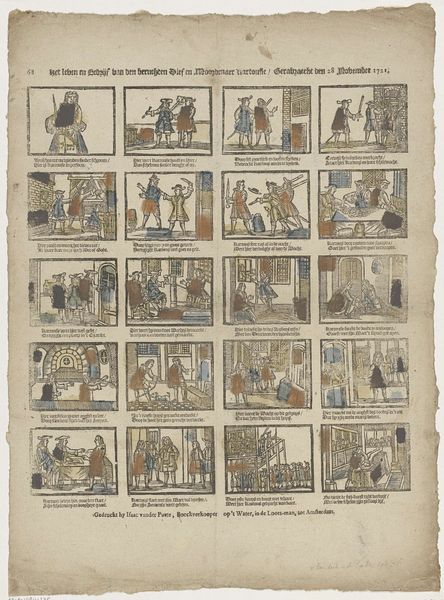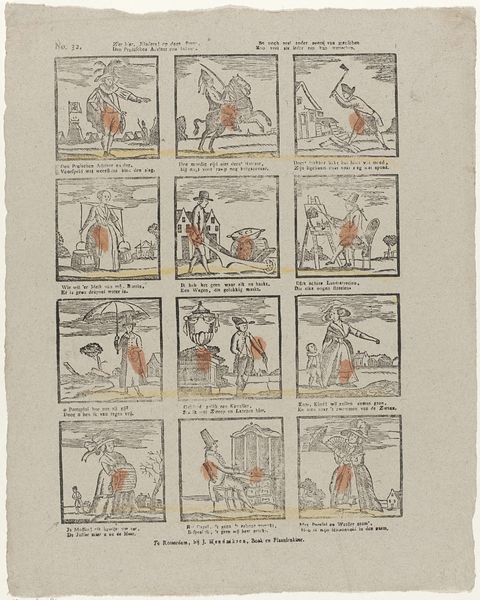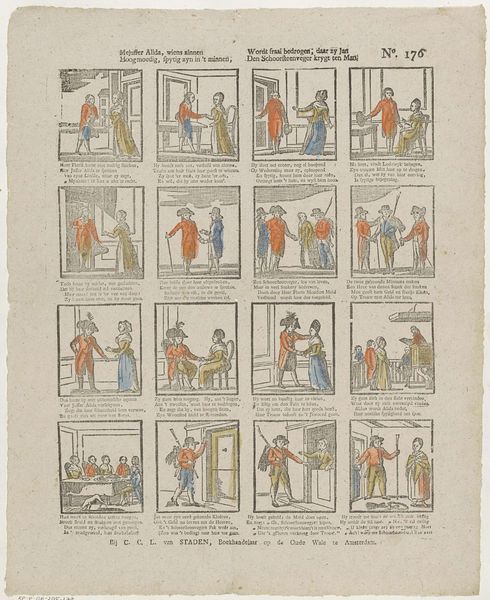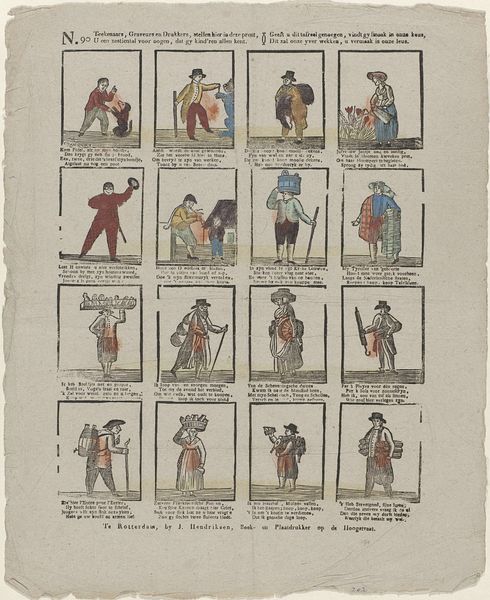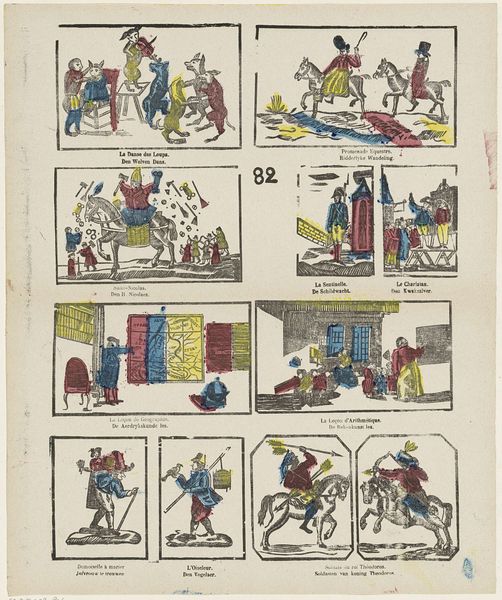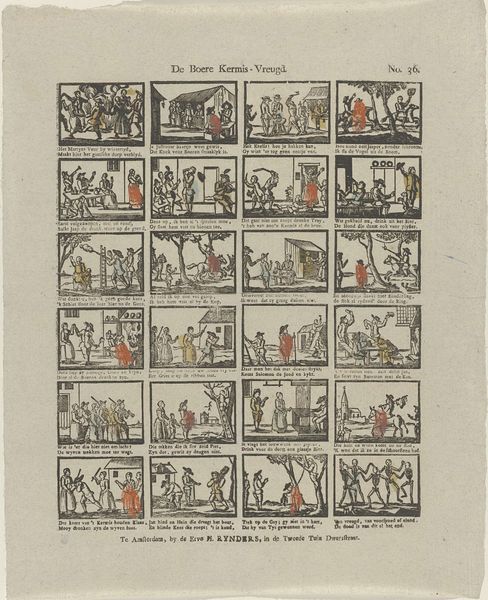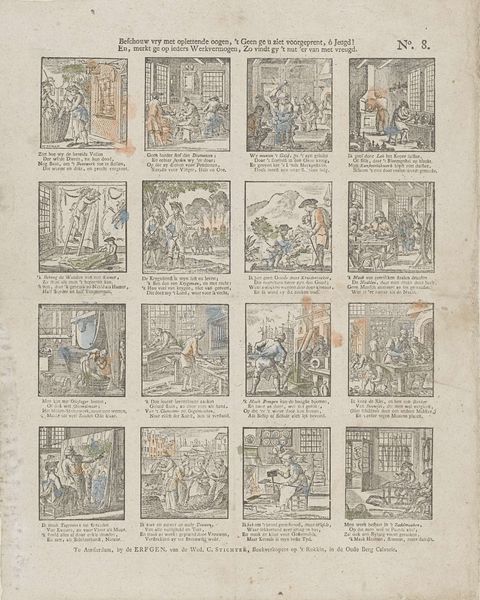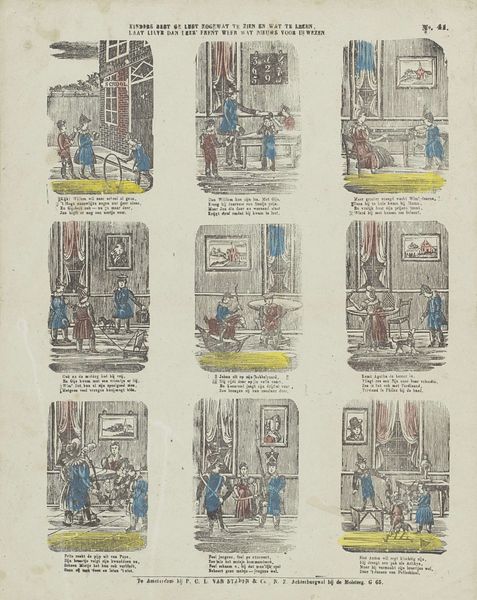
Dimensions: height 384 mm, width 304 mm
Copyright: Rijks Museum: Open Domain
Curator: This intriguing print, entitled "Don Quichot," resides here at the Rijksmuseum. Its creation is attributed to M. Hemeleers-van Houter, likely sometime between 1827 and 1894. Look closely—it's an engraving. Editor: My first impression is a story unfolding. Each panel reads like a frame from a film strip. It possesses a darkly humorous, almost cartoonish, feel despite its antique aesthetic. Curator: Absolutely. The piece’s narrative construction emphasizes how stories are told and disseminated. Considering this work comes from an artist not necessarily working in 'high art', how does this challenge our notions of who gets to depict these historical narratives? Further, consider the labor involved. Engraving, especially at this scale, is demanding. Who benefitted from its consumption? Editor: Indeed. The act of printing allowed this story to proliferate. Considering the source material—Cervantes' "Don Quixote"—a story that already deconstructs ideas of nobility and romance, we see how class is being mediated in Hemeleers-van Houter's work. It shows the material conditions of Romanticism; that it wasn't just ethereal and philosophical. This brings the narrative of Don Quixote to the masses and maybe asks them to consider their own delusions, be they noble or ignoble. Curator: Moreover, the almost crude or amateur aesthetic could be intentional. It speaks to the commodification of art. A luxury product is recreated using cheap, accessible labor and materials. Was this artist perhaps critiquing art as mere spectacle? Editor: I believe you're onto something. Art doesn't exist in a vacuum; this print clearly illustrates a feedback loop between literature, societal structures, artistic expression, and commerce. It's an active, ongoing conversation with culture itself. Curator: I'm drawn back to considering the role of the artist. An artisan of sorts, creating both images and, essentially, reproducible goods. Editor: It prompts us to examine how stories, regardless of their lofty origins, get reshaped by labor and material circumstances into objects accessible to broader audiences, raising vital questions about access, privilege, and production.
Comments
No comments
Be the first to comment and join the conversation on the ultimate creative platform.

